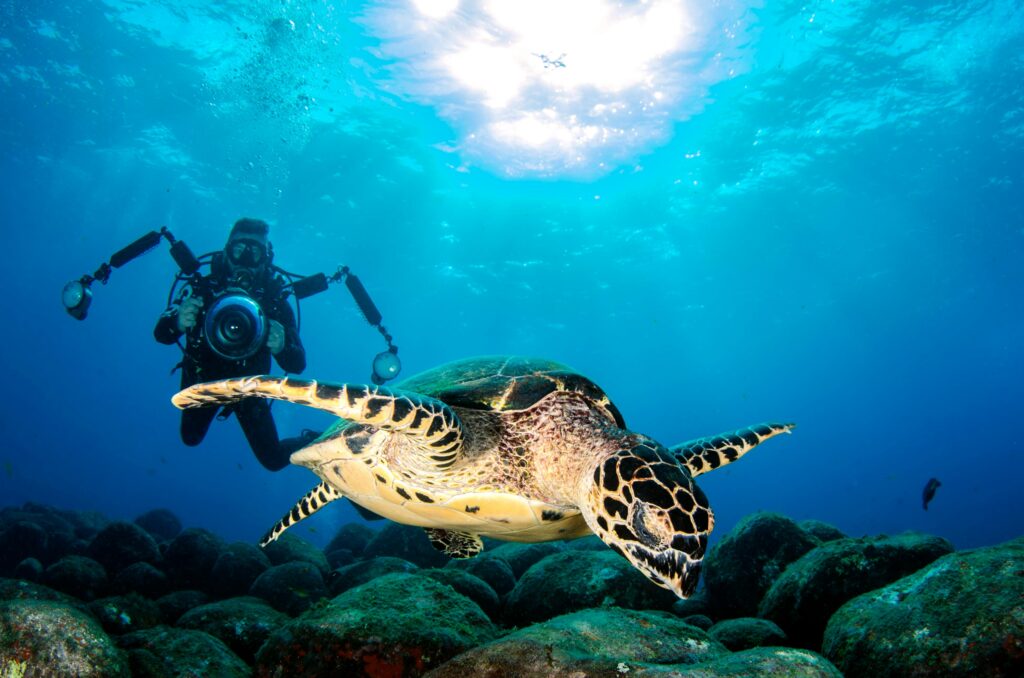Embarking on the journey of underwater photography opens up a mesmerizing realm of beauty and wonder, where vibrant marine life and stunning seascapes await your lens. A certain combination of abilities and considerations is needed to master the art of taking striking pictures below the waves, regardless of your level of experience with photography. This comprehensive guide will explore three invaluable tips to help you kickstart your underwater photography journey with confidence and creativity, paving the way for unforgettable aquatic adventures.
1. Understanding Your Equipment: Navigating the Depths with Precision
Choosing the Right Gear: Essential Tools for Submerged Exploration
Central to successful underwater photography is selecting the right equipment to suit your needs and environment. Every component, from housings and lighting systems to cameras and lenses, is essential to getting amazing shots below the surface. When investing in subsea cameras, prioritize factors such as image quality, durability, and compatibility with underwater housings. Seek models with features like rapid autofocus, customizable white balance adjustments, and watertight sealing that are designed specifically for underwater photography. Think about your gear’s mobility and adaptability as well, particularly if you want to explore a range of underwater settings, such as deep-sea trenches and coral reefs.
Mastering Underwater Techniques: Navigating Challenges with Finesse
To take striking photos in this unique environment, you need to learn fundamental underwater photography methods in addition to getting the appropriate equipment. Gaining proficiency in several areas, such as buoyancy control, light dispersion, and color correction, can help you face the difficulties of underwater photography with assurance and accuracy. Try a variety of manual settings and shooting modes to get the best exposure and composition possible, taking into account factors like depth, water clarity, and ambient light. Use perseverance and patience, seeing every dive as an opportunity to hone your skills and capture the elusive beauty of the undersea world with your camera.
2. Exploring Composition: Crafting Visual Narratives Beneath the Waves
Embracing Natural Elements: Harnessing Light and Motion
In underwater photography, mastering composition is essential for creating visually compelling narratives that resonate with your audience. Create rich, engrossing visuals by embracing the dynamic interplay of natural elements like light, motion, and color. To depict the fluidity of undersea life, from the delicate movement of marine animals to the play of light on bright coral formations, experiment with various angles and perspectives. Make the most of natural light wherever you can by using backlighting and silhouette to give your compositions depth and drama.
Creating Balance and Harmony: Capturing the Essence of Underwater Scenes
Finding harmony and balance within your frame, directing the viewer’s attention across the picture, and evoking a feeling of depth and scale are all important components of effective composition. Consider components like symmetry, negative space, and leading lines to create compositions that captivate the eye and entice the spectator into the frame. Try a variety of framing strategies to bring attention to the distinct patterns and textures under the waves, such as elaborate coral formations or dazzling schools of fish.
3. Navigating Challenges: Overcoming Obstacles with Creativity
Adapting to Changing Conditions: Flexibility and Resilience
Unpredictable obstacles are common in underwater photography, ranging from erratic currents and turbulent conditions to unanticipated encounters with marine life. Develop resilience and adaptability to thrive in this fast-paced setting, embracing every obstacle as an opportunity for original problem-solving. Keep an eye on your surroundings and be ready to modify your shooting strategies quickly to account for shifting circumstances by modifying composition and settings. Approach every dive with an open mind and a readiness to explore new possibilities, regardless of elusive topics or limited visibility.
Protecting the Environment: Ethical Practices for Sustainable Photography
Underwater photographers must minimize their influence on delicate marine ecosystems and species as stewards of the ocean. During your dives, make ethical and sustainable practices a priority. Respect marine life and environments while captivating images. Avoid touching or harming fragile coral reefs and other underwater ecosystems, as well as from disturbing or harassing marine life only for a picture. Opt for environmentally friendly dive operators and practices, supporting initiatives that promote marine conservation and responsible tourism.
Conclusion
Embarking on the exhilarating journey of underwater photography offers a gateway to a world of unparalleled beauty and adventure. Understanding your tools, becoming proficient in key skills, and overcoming obstacles with ingenuity and resiliency can help you take breathtaking images that highlight the fascinating variety of the undersea environment. Embrace each dive as an opportunity for exploration and discovery, honing your skills and refining your craft with each submerged adventure. With dedication, patience, and a passion for storytelling, you can unlock the transformative power of underwater photography, creating images that inspire awe and appreciation for the wonders of the sea.
